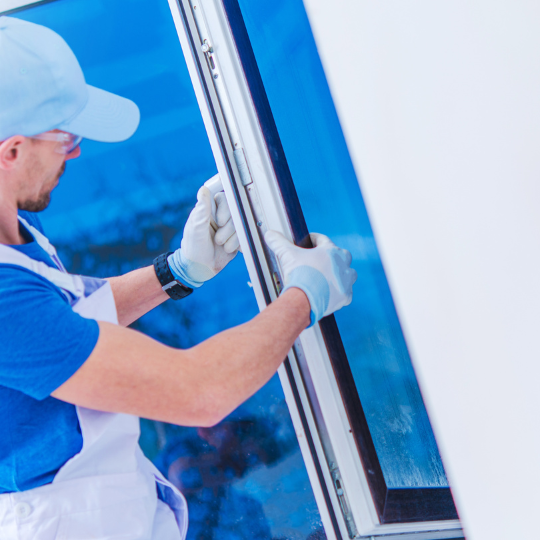A Breakdown of Factors Influencing Glass Replacement Costs
Replacing glass can be a substantial expense, impacting everything from your home and vehicle to your business. Whether you’re dealing with shattered windows, cracked windshields, or custom glass installations, understanding the factors that drive up the cost is essential for making informed choices. This detailed guide will explore all aspects of glass replacement costs, including what affects pricing, how to create a budget, and practical tips for reducing expenses. By grasping these elements, you can better navigate the financial implications of glass replacement and ensure you get the best value for your investment.
How to Choose Cost-Effective Options for Glass Replacement
To choose cost-effective options for glass replacement, start by comparing different types of glass. Opt for standard glass when possible, as it’s generally less expensive than specialty types like tempered or laminated glass. Evaluate the necessity of any special features based on your specific needs. For example, if energy efficiency is not a priority, standard glass will suffice and save you money.
Additionally, get multiple quotes from various service providers to find the best deal. Look for companies offering competitive pricing without compromising on quality. Also, consider any potential discounts or promotions. By carefully selecting the type of glass and comparing service options, you can achieve significant savings on your replacement project.

Factors Influencing Glass Replacement Costs
The cost of glass replacement varies widely based on several factors. Here’s a closer look at the key elements that influence pricing:
Type of Glass
The type of glass being replaced significantly affects the cost. Standard glass is less expensive, while specialty options like tempered or laminated glass are pricier due to additional processing and safety features. Custom glass also tends to be more costly.
Size and Shape of the Glass
Larger or uniquely shaped glass pieces require more materials and precise cutting, raising costs. Standard sizes are typically cheaper to replace compared to custom or oversized glass, which demands specialized equipment and increased labor.
Location of the Glass
The location impacts replacement costs significantly. Glass in hard-to-reach or high-rise areas requires special equipment and safety measures, driving up the price. Geographical location also affects labor and material costs due to regional variations.
Type of Property
The type of property influences replacement costs. Residential glass replacement is usually less expensive compared to commercial or industrial glass, which often involves larger or more complex installations and additional safety considerations.
Labor Costs
Labor costs vary based on job complexity and technician experience. Simple replacements are less costly, while complex jobs, such as custom glass or high-rise installations, require skilled professionals and specialized equipment, leading to higher labor charges.
Key Elements Influencing the Price of Glass Replacement
Several key elements impact the price of glass replacement. The type of glass is a primary factor; standard glass is generally more affordable than specialized options like tempered or laminated glass, which require additional processing. The size and shape of the glass also play a significant role, as larger or custom-shaped pieces demand more materials and precise cutting, increasing overall costs.
Additionally, the location of the glass and the complexity of the installation affect pricing. Glass replacements in high-rise buildings or hard-to-reach areas involve special equipment and safety measures, raising labor costs. By considering these elements, you can better understand and manage the expenses associated with glass replacement.
How to Budget for Glass Replacement
Budgeting for glass replacement involves careful planning and understanding the scope of the project. Start by obtaining quotes from multiple providers to compare costs and services, ensuring you get a fair estimate. This helps identify any discrepancies and allows you to choose the most cost-effective option. Also, check if your insurance covers any of the expenses, as many policies include glass replacement.
In addition to the glass cost itself, consider potential extra expenses like removal and disposal fees, framing repairs, and any required permits. Planning for these additional costs ensures you’re prepared for the full financial impact of the replacement project.
Tips for Minimizing Glass Replacement Costs
While glass replacement can be costly, there are several strategies to help you reduce expenses:
-
Opt for Standard Glass When Possible: Choosing standard glass instead of specialty types can significantly reduce costs. For most applications, standard glass provides sufficient functionality and affordability without the added expense of custom or specialty options.
-
Perform Regular Maintenance: Regular maintenance, such as cleaning and inspecting for damage, can extend the life of your glass. Addressing minor issues promptly can prevent costly replacements and keep your glass in optimal condition.
-
Choose a Reputable Service Provider: Selecting a well-reviewed and experienced glass replacement service ensures quality work and fair pricing. A reputable provider will deliver reliable results and minimize the risk of future issues or additional costs.
-
Consider DIY for Simple Projects: For straightforward glass replacement tasks, such as small windows, consider DIY options if you have the skills. Many kits and tutorials are available, which can save on labor costs.
What Determines the Price of Your Glass Replacement Job
The price of your glass replacement job is influenced by several key factors. The type of glass is a major determinant; standard glass is less expensive than specialty options like tempered, laminated, or custom glass. Additionally, the size and shape of the glass affect costs, with larger or irregularly shaped pieces requiring more materials and labor, driving up the price.
Other considerations include the location of the glass, as hard-to-reach or high-rise installations require special equipment and safety measures. Labor costs also vary based on job complexity and technician expertise. Understanding these factors can help you estimate costs more accurately and make informed decisions.
Navigating the Costs of Different Glass Replacement Types
Understanding the costs associated with various glass replacement types helps in making informed financial decisions. Standard glass is typically the most affordable option and is suitable for basic needs. However, if your project requires enhanced durability or safety, such as for windshields or shower doors, tempered or laminated glass will be necessary. These types come with higher price tags due to their advanced processing and safety features.
For more specialized applications, like custom or double-glazed windows, expect to pay significantly more. These options offer added benefits such as improved insulation but involve greater complexity and higher material costs. Assessing your specific needs against these options will help you balance cost with functionality.
Conclusion
Understanding the cost of glass replacement is key to making informed decisions and managing your budget effectively. By considering factors like the type of glass, size, and installation complexity, it’s possible to better estimate expenses. Budgeting, exploring insurance options, and choosing a reputable provider will further help in managing costs. Vista Glass of Sahuarita, located in Sahuarita, offers expert advice and competitive pricing for all glass needs. For a detailed quote and efficient, affordable service, reach out to Vista Glass of Sahuarita today.

